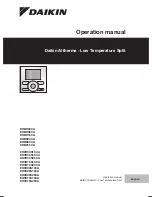
E L C P r o g r a m m i n g M a n u a l
F or more info rmat io n vi sit: www.e a to n.c om M N 0 5 003 00 3 E
4-2
4. Sequential Function Chart
4.1 Sequential Function Chart (SFC)
Sequential Function Charts are a graphical method of organizing a PLC program in which the entire
structure of the program resembles a flow chart. The two primary components of an SFC are steps
and transitions. A step is a group of logic used to accomplish a particular control task. Steps in an
SFC are very similar to the steps in a flow chart. Transitions are the mechanisms used to decide
which step should occur next and precisely when that step should become active. Transitions are
like the arrows in a flow chart.
Each step and transition contains a so-called “inner ladder” which allows the programmer to create
ladder logic that will run whenever that step or transition is active. While a given step is active its
inner ladder will execute continuously until the condition(s) for the transition are met, at which point
the next step(s) in the sequence will become active.
SFC programming is beneficial for use in applications which have a repeatable multi-step process or
series of repeatable processes. Programmers who use the State-Machine method of programming
will find SFCs to be a useful programming method. The visual nature of the SFC makes it easy to
maintain. The active step(s) are highlighted, pointing out what logic is being executed. Due to the
fact that the program is divided into steps, one “section” of the program can be viewed rather than
viewing the entire program.
4.2 Basic
Operation
■
SFC Toolbar and Icons Explanation:
Icons shown
on SFC
toolbar
Description of Icons
Explanation:
Common ladder
Located in front of an initial SFC Step Point. Contains
code that is run on every scan (outside of the Step
procedure). No transition point is used.
Initial diagram of
SFC
Diagram for the Initial Step Point: double-framed
diagram designates the start of a Step Procedure.
Available devices are only S0~S9. Only one can be used
per procedure.
Common SFC
Diagram for the Common Step Point: Used for all other
step points outside of the Initial Step Point. Available
devices vary by processor.
Jump diagram
Jump diagram: Used to move from one step point to
another that is not sequenced in order or not in the same
procedure.
Condition diagram
Transition condition diagram: The condition used to
transition to the next step.
Divergence of
condition diagram
Alternative divergence: Used to move from a single step
point to one of multiple subsequent step points, each
move having a different transition condition.
Содержание ELC-PB
Страница 1: ......
Страница 5: ...For more information visit www eaton com MN05003003E iv...
Страница 29: ...ELC Programming Manual For more information visit www eaton com MN05003003E 1 24 MEMO...
Страница 502: ...3 Instruction Set MN05003003E For more information visit www eaton com 3 333...
Страница 601: ...ELC Programming Manual For more information visit www eaton com MN05003003E 3 432...
Страница 625: ...ELC Programming Manual For more information visit www eaton com MN05003003E 3 456...
















































